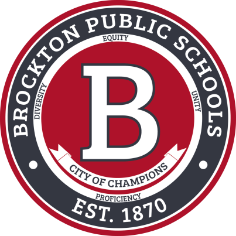Technology
New technology naturally comes with the need for occasional technology support. If you require assistance, we ask that students and families reach out to their schools directly. BPS staff should visit the Technology Services page and fill out a work order.
For help with setting up an account on the parent portal (Infinite Campus) or with navigating the parent portal, click here.
Student Outcomes
Students as Active Learners
Students should demonstrate the following outcomes as they gain facility in the use of technology to aid their learning:
Students as self-directed learners
• use appropriate technology to access information and reach goals.
• set priorities.
• evaluate and manage their own progress toward goals.
Students as complex thinkers
• identify, analyze, integrate and apply information.
• utilize multiple frames of reference.
• solve complex problems.
Students as cooperative workers
• participate in group problem solving.
• connect to world-wide networks.
• evaluate and manage their own behavior as group members.
Students as effective communicators
• use technology to navigate through information.
• use assistive/augmentative communication devices as appropriate.
• communicate in a variety of situations.
• apply information to problem solving.
Students as innovative quality producers
• create original quality products.
• use appropriate up-to-date technology.
These learning environments will prepare students to
• communicate using a variety of media and formats.
• access and exchange information in a variety of ways.
• compile, organize, analyze, and synthesize information.
• draw conclusions and make generalizations based on information gathered.
• use information and select appropriate tools to solve problems.
• know content and be able to locate additional information as needed.
• become self-directed learners.
• collaborate and cooperate in team efforts.
• interact with others in ethical and appropriate ways.
Students will:
• demonstrate a sound understanding of the nature and operation of technology systems.
• be proficient in the use of technology.
• understand the ethical, cultural, and societal issues related to technology.
• practice responsible use of technology systems, information, and software.
• develop positive attitudes toward technology uses that support lifelong learning, collaboration, personal pursuits, and productivity.
• use technology tools to promote creativity, enhance learning, and increase productivity.
• use productivity tools to collaborate in constructing technology-enhanced models, preparing publications, and producing other creative works.
• use telecommunication to collaborate, publish, and interact with peers, experts, and other audiences.
• use a variety of media and formats to communicate information and ideas effectively to multiple audiences.
• use technology to locate, evaluate, and collect information from a variety of sources.
• use technology tools to process data and report results.
• evaluate and select new information resources and technological innovations based on the appropriateness to specific tasks.
• use technology resources for solving problems and making informed decisions.
• employ technology in the development of strategies for solving problems in the real world.
Teachers know that the wise use of technology can enrich learning environments and enable students to achieve marketable skills. It is critical that educators analyze the potential benefits of technology for learning and employ it appropriately.
Teacher Outcomes
• instruct and model the use of technology to access information.
• introduce students to their rights, responsibilities and ethical use of technology, including the Internet.
• collaborate with other teachers to develop curriculum- related meaningful ways for students to learn strategies for accessing, analyzing, and using information.
• incorporate technology in accordance with the system's guidelines that support the curriculum frameworks and the personal growth of the students.
• function as coach and facilitator daily.
• use alternative, performance-based assessments weekly.
• use rubrics as part of assessment.
• use portfolios of students' work as indicators of student success.
Best Practices
Best Practices in Instructional Technology:
The following combination of essential conditions must be in place to create learning environments conducive to powerful uses of technology:
• vision with support and proactive leadership from the education system
• educators skilled in the use of technology for learning
• content standards and curriculum resources
• student-centered approaches to learning
• assessment of the effectiveness of technology for learning
• access to contemporary technologies, software, and telecommunications networks
• technical assistance for maintaining and using technology resources
• community partners who provide expertise, support, and real-life interactions
• ongoing financial support for sustained technology use
• policies and standards which support new learning environments
The resulting learning environments will provide opportunities for students to use technology to find and apply current information and resources, and to apply their academic skills for solving real-world problems. These environments allow students to engage in activities that interweave education technology with relevant curricular content.
Traditional educational practices no longer provide students with all the necessary skills for economic survival in today's workplace. Students must apply strategies for solving problems and use appropriate tools for learning, collaborating, and communicating. The most effective learning environments meld traditional approaches with new approaches to facilitate learning of relevant content while addressing individual needs.
Philosophy & Guiding Principles
The Brockton Public Schools' Instructional Technology Program, K-12, must help prepare students for their futures rather than reinforce the past. Technology has changed the very fabric of today's society. It has been the driver of change in such areas as global communications, economics, the arts, politics and environmental issues. Technology is key to learners' achievement of world class educational standards. Thus, instructional technology must be infused into learning in every subject area. When technology is effectively integrated into classroom instruction at all levels, it can raise both the quality of teaching and the level of student achievement. As technology itself changes, the instructional technology program will adapt and change to meet the needs of our students.
The Brockton Public Schools seeks to prepare a learning community of technologically literate lifelong learners. These learners will be able to interact successfully in a technological environment to achieve their personal, educational, and workplace goals. In order to ensure individual student achievement, technology should be utilized to support pedagogical models that address student needs (for example, assistive and adaptive technologies) and maximize learning for all students.
Students must be able to access information, manipulate data, synthesize concepts and creatively express ideas to others using video, text and audio media. It is the expectation of the Brockton Public Schools that each student will be able to retrieve information and use it to make decisions and solve problems. These learners will skillfully use technology to access, retrieve and use information school-wide, community-wide, nationally and internationally. Technology opens the world to students, providing a depth and richness of instructional approaches to reach children of all learning modalities.
Guiding Principles
Technology should be used by students and teachers to facilitate learning. The content areas provide a curricular context for the use of technology. Classroom practice should reflect not only the National Education Technology Standards and profiles, but also the standards of the National Council of Teachers of Mathematics, the International Reading Association and the National Council for the Social Studies. Technology is not to be promoted in isolation, but rather should be an integral tool for learning and communication within the context of academic subject areas.
Through the increased use of technology, learning environments in the schools, K-12, will exemplify the shifting paradigms of exemplary practice.


